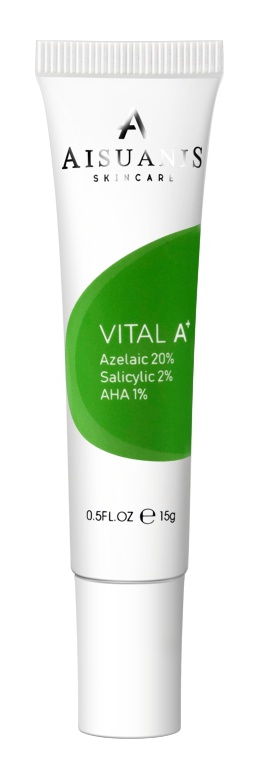
Potassium Azeloyl Diglycinate
Details
A derivative of clinically proven, superstar ingredient Azelaic Acid and hydrating amino acid Glycine. Azelaic acid is an awesome ingredient with anti-inflammatory, skin lightening and anti-acne effects, but its insolubility (it's soluble neither in water nor in oil) makes it difficult to use it in a cosmetically elegant and versatile way.
The solution is supposed to be Potassium Azeloyl Diglycinate, at least according to the manufacturer. The derivative is very water soluble, easy to use in nice formulas and inherits all the lovely properties of Azelaic acid. It acts as a skin brightening agent via Tyrosinase (a famous enzyme needed to make melanin) inhibition and also has significant sebum normalizing activity.
Regarding research, we could find two studies where Potassium Azeloyl Diglycinate's name popped up. One study examined the management of rosacea and the other one researched the treatment of melasma. Both were successful (we mean people showed improvement :)) but our Azelaic acid derivative was combined with other actives so it's hard to know what to attribute to this guy only.
Overall, a promising multi-function active that's worth checking out if you have pigmentation-prone, acne-prone or rosacea-prone skin.
Show me some proof
- Berardesca, Enzo, et al. "Clinical and instrumental assessment of the effects of a new product based on hydroxypropyl chitosan and potassium azeloyl diglycinate in the management of rosacea." Journal of cosmetic dermatology 11.1 (2012): 37-41.
- Viyoch, Jarupa, et al. "Effects of trans-4-(aminomethyl) cyclohexanecarboxylic acid/potassium azeloyl diglycinate/niacinamide topical emulsion in Thai adults with melasma: a single-center, randomized, double-blind, controlled study." Current Therapeutic Research 71.6 (2010): 345-359.
- Veraldi, Stefano, et al. "Treatment of symptoms of erythemato-telangiectatic rosacea with topical potassium azeloyl diglycinate and hydroxypropyl chitosan: Results of a sponsor-free, multicenter, open study." Journal of Dermatological Treatment 26.2 (2015): 191-192.






